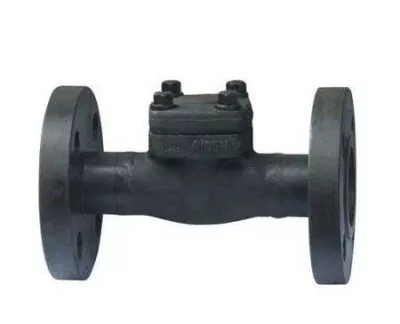Why the forged valve manufactured with ASTM A105 is black
Phosphorization which is applied to forged valves is a process of forming phosphate-chemical conversion films by chemical and electrochemical reactions.
Phosphating Process
Removal of oil and rust →Washing → Phosphating →Washing → Phosphating post →Treatment.
Affecting Factors of Phosphating
1. Temperature
The higher the temperature, the thicker the phosphating layer and the bigger the crystallization is. The lower the temperature, the thinner the phosphating layer and the finer the crystallization is. However, the temperature should not be too high, otherwise, Fe2+ can be easily oxidized to Fe3+, and the sediment content should be increased, resulting in the solution unstable.
2. Free Acidity
3. Total Acidity
The total acidity is generally controlled at the upper limit of the specified range, which is conducive to accelerating the phosphating reaction
4. PH
The PH value of the phosphating liquid of manganese series is generally controlled between 2 to 3.
5. Concentration of the Ions in the Solution
The Property of Parkerizing
1. Corrosion Resistance
It has good corrosion resistance in atmosphere, mineral oil, vegetable oil, benzene and toluene, but poor corrosion resistance in alkali, acid and water vapor. During the temperature of 200-300 ℃, it still has certain corrosion resistance. However, when the temperature reaches 450 ℃, the corrosion resistance of the coating decreased significantly.
2. Special Properties
It could help increase adhesion, lubricity and anti - friction effect.
The Purpose of Phosphorization
Steel phosphating is mainly used for corrosion resistance prevention and paint substrate.
1. Phosphating Film for Corrosion Prevention
The phosphating film is used for protecting steel and iron. The phosphating film can be divided into zinc series and manganese series. The mass per unit area of the membrane is 10-40g/m2. After phosphating, the coating is composed of rust - proof oil, rust - proof grease or rust - proof wax. A phosphating film is applied to the underlying surface of the paint.
Phosphorization can increase the adhesion and protection between the paint film and steel workplace. The type of phosphating films can be zinc or zinc calcium. The mass per unit area of a phosphating film is 0.2-1.0g/m2 (used for paint base of steel parts with large deformation); 1-5g/m2 (for general iron and steel part paint base); 5-10g/m2 (used for paint base of steel parts without deformation).
2. Phosphating Films for Cold Lubrication
The weight per unit area of the upper membrane of steel wire and welded steel pipe drawing is 1-10g/m2; the weight per unit area of the upper film of precision steel pipe drawing is 4-10g/m2; the weight per unit area of the upper film of the cold extrusion molding for steel parts is greater than 10g/m2.
3. Phosphating Film for Anti-friction
The phosphating film can reduce friction. Manganese phosphorization is commonly used, while zinc phosphorization is also available. For the workpieces with small dynamic clearance, the weight per unit area of the phosphating film is 1-3g/m2; the phosphating film's weight per unit area is 5-20g/m2 for the workpiece with large dynamic clearance (reduction gear).
4. Phosphating Film for Electrical Insulation
Zinc phosphorization is commonly used for phosphating of silicon wafers in motors and transformers.
